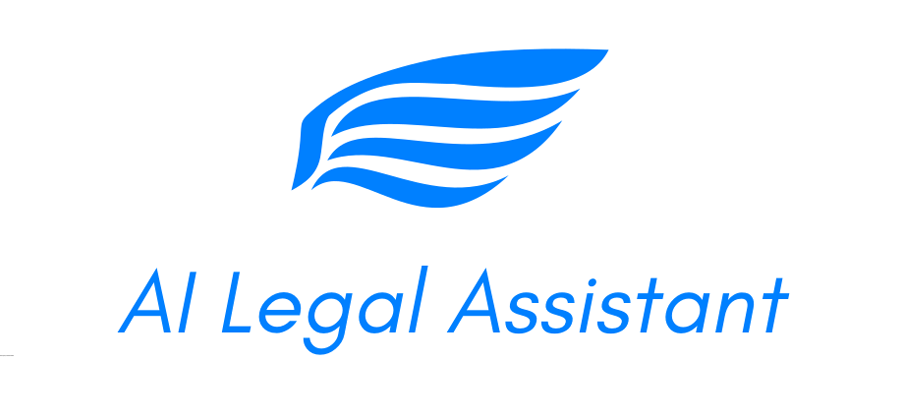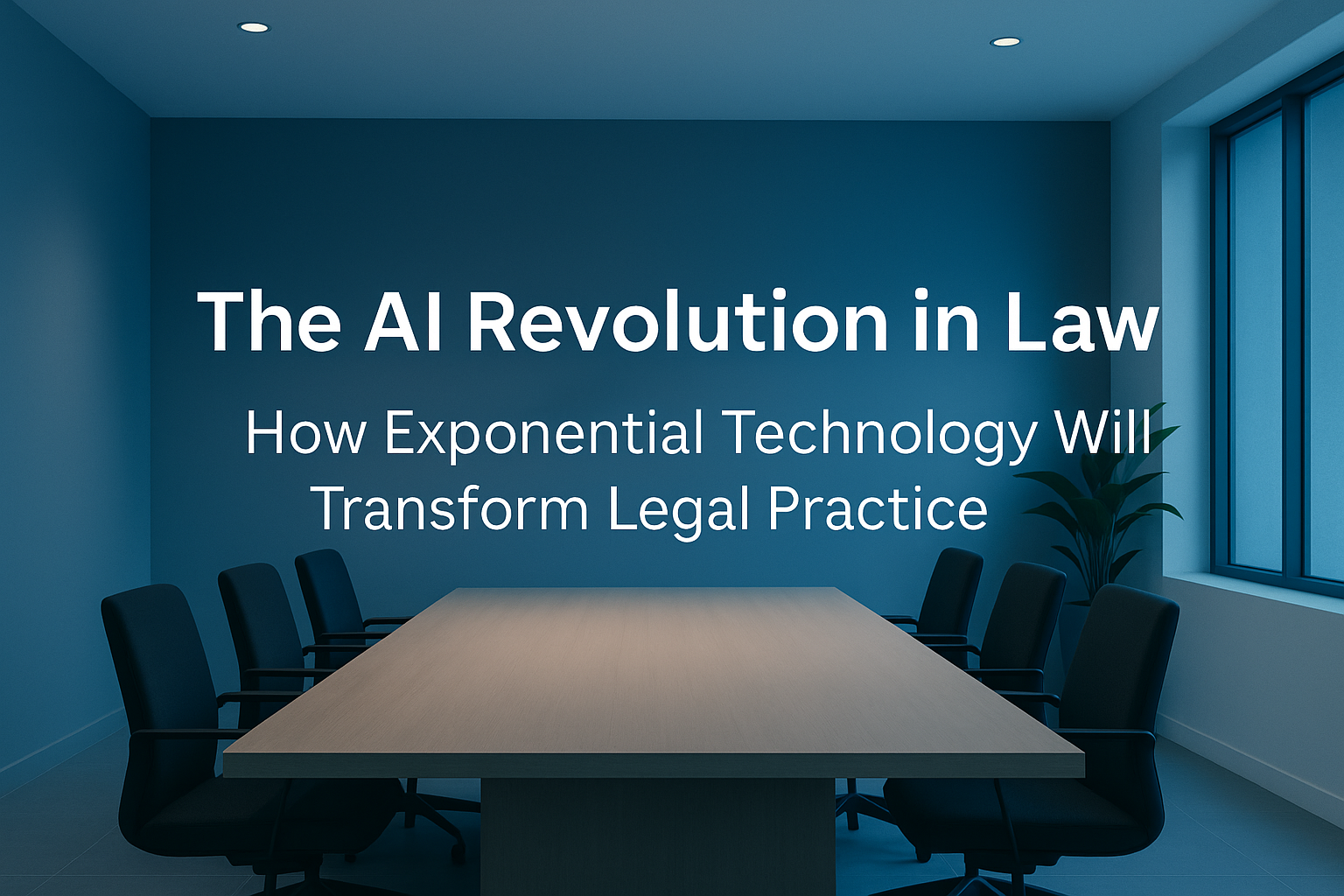
Introduction to AI in Legal Practices
In the evolving domain of legal practices, the integration of Artificial Intelligence (AI) technologies is reshaping the landscape. This shift is not merely a trend but a fundamental transformation that legal professionals must navigate. The current landscape of AI in law is characterised by several key applications that not only enhance efficiency but also redefine the way attorneys engage with their clients and manage cases. Understanding these technologies is imperative for practitioners aiming to remain competitive in an increasingly digital environment.
AI technologies have made their mark across various facets of legal operations. Document automation stands out as one of the most impactful applications. By leveraging AI, law firms can automate the generation and review of legal documents, significantly decreasing the time traditionally spent on these tasks. This advancement reduces the risk of human error—historically a notable concern within the legal field. In many instances, what once took days can now be accomplished in a matter of hours, allowing lawyers to allocate more time to strategising and client interactions.
Predictive analytics is another transformative force within legal practices. By analysing historical case data, AI tools can offer insights into potential outcomes based on patterns observed in similar cases. This capability empowers attorneys to make informed decisions regarding case strategies, providing a competitive edge that can be pivotal in high-stakes situations. Imagine a scenario where a lawyer is able to assess the likely success of a case before even stepping into the courtroom. This tool not only enhances the decision-making process but also helps manage client expectations more effectively.
Furthermore, client management systems enhanced by AI play a crucial role in improving client relationships. By personalising communication and tracking client interactions, these systems facilitate a deeper understanding of client needs and preferences. This approach fosters loyalty and satisfaction, essential components in an industry where client retention is paramount. In a time when clients expect tailored services and quick responses, AI-driven insights can make all the difference in maintaining strong connections.
Legal research has also benefited immensely from AI technologies. Traditional research methods often involve sifting through vast databases to find relevant statutes and case law. AI-powered tools streamline this process by quickly identifying pertinent information, enabling attorneys to focus on developing strategies rather than spending countless hours on research. This efficiency not only enhances productivity but also allows firms to respond to client needs more swiftly.
However, as the market becomes saturated with AI products, it is crucial for legal professionals to discern between superficial AI solutions and substantial technologies that provide real value. The proliferation of software promising efficiency can be misleading; many tools offer little more than functionality wrapped in marketing rhetoric. For firms it is imperative to evaluate their technological choices critically. The decision-making process surrounding technology adoption can significantly affect operational performance.
The implications of AI integration extend far beyond immediate efficiency gains. Law firms must engage in strategic planning to ensure that technological adoption aligns with their long-term objectives. Successful integration requires not only investment in advanced technologies but also a cultural shift within the firm. Training staff to utilise these tools effectively and fostering an environment that encourages innovation are essential steps in this transformation.
As we advance in our exploration of AI’s role in legal practices, the focus will shift to outlining the metrics used to evaluate the effectiveness of these technologies. Productivity gains, error reduction, and cost savings will serve as key indicators of success. Moreover, successful implementations of AI will be examined, showcasing real-world applications that yield measurable benefits.
The future of law hinges on the ability of firms to adapt to these changes. Organisations that embrace AI as a collaborative partner rather than viewing it as a mere substitute for human expertise will likely thrive. This paradigm shift encourages a deeper understanding of AI’s transformative potential, allowing legal professionals to harness its capabilities for improved outcomes.
In this discourse, we will dive into the nuances of AI technologies in law, unravelling the distinctions between superficial and substantial solutions. These insights will pave the way for a more profound understanding of how technology can enhance the fabric of legal practice, ensuring that firms are not only prepared for the future but actively shaping it. The journey into AI’s implications in legal fields is just beginning, and the stakes have never been higher. Those who engage thoughtfully with these advancements stand to benefit significantly from the evolving landscape.
Superficial vs. Substantial AI Solutions
In the current landscape of legal technology, distinguishing between superficial and substantial AI solutions is paramount. Legal professionals must investigate a marketplace flooded with products that often prioritise marketing hype over genuine utility. Superficial AI solutions frequently masquerade as cutting-edge technologies, yet provide minimal functionality. Their allure lies in attractive branding and promises of efficiency, but the underlying capabilities often fall short of delivering real value. This distinction is crucial as firms consider the implications of their technology choices on operational performance and client satisfaction.
Superficial AI solutions typically fall into a few distinct categories. Many are positioned as basic automation tools that execute simple tasks without addressing the deeper complexities of legal workflows. These offerings tout features such as automated document creation or basic client interaction scripts. However, they often lack the analytical depth required to enhance legal practices meaningfully. For instance, a chatbot may handle straightforward inquiries but will not provide nuanced advice or insights crucial for effective legal representation. These technologies can create a false sense of security within law firms, leading them to believe they are technologically advanced while potentially hindering their growth.
On the other hand, substantial AI technologies are those that integrate advanced functionalities designed to enhance legal workflows comprehensively. These tools leverage predictive analytics, machine learning, and other sophisticated techniques to provide meaningful insights and automate complex processes. For example, AI-driven legal research tools not only expedite the search for relevant case law but also analyse the context of the data, offering insights that allow lawyers to strategise effectively. Such substantial offerings are transformative because they address real challenges in legal practice, enabling firms to improve productivity, reduce errors, and enhance client service.
Understanding the distinction between these categories is not merely an academic exercise; it has tangible implications for law firms. Misplaced investments in superficial AI may lead to wasted resources and missed opportunities for genuine innovation. Firms may find themselves unable to compete effectively in a rapidly evolving market where client expectations are heightened. Conversely, investing in substantial AI can lead to significant improvements in operational efficiency and client outcomes. Legal practitioners must critically evaluate the technologies they choose to adopt, assessing whether they offer genuine enhancements to their practices or are simply repackaged versions of outdated tools.
To facilitate this evaluation, firms should establish clear criteria for assessing AI technologies. This includes scrutinising the functionality that these tools offer beyond their marketing claims. Metrics such as productivity gains, error reduction, and cost savings should guide decision-making processes. For instance, if an AI solution claims to reduce drafting time, firms should analyse actual performance metrics to confirm these benefits. Tools that genuinely enhance workflows and provide measurable results should be prioritised over those that merely promise surface-level improvements.
Moreover, successful implementations of substantial AI technologies demonstrate the transformative potential embedded within these systems. By examining examples of law firms that have integrated advanced AI solutions into their operations, one can glean important lessons. For instance, firms that have adopted AI-enhanced document automation have reported significant time savings and reductions in errors, which contribute directly to greater client satisfaction. These implementations provide a roadmap for others in the industry, highlighting best practices and showcasing how meaningful technology integration can reshape legal workflows.
The transformative potential of AI extends beyond mere efficiency gains; it fosters sustainable growth strategies that align with evolving market demands and client expectations. By leveraging AI’s capabilities, law firms can develop a deeper understanding of client behaviours and preferences, enabling them to tailor services accordingly. This client-centric approach not only enhances satisfaction but also cultivates loyalty, ensuring that firms remain competitive in a saturated market.
In summary, the dichotomy between superficial and substantial AI solutions is critical in shaping the future of legal practices. Law firms must investigate this landscape with discernment, prioritising technologies that offer genuine advancements over those that merely serve marketing purposes. By adopting a rigorous approach to evaluating AI technologies, legal professionals can position themselves for success, ultimately transforming their practices and enhancing client outcomes. As the industry continues to evolve, embracing substantial AI solutions will be key to maintaining relevance and achieving sustainable growth in a rapidly changing environment.
Evaluating Impact Metrics
In evaluating the impact of AI technologies in legal practices, it is essential to employ metrics that provide a concrete means of assessing effectiveness. Legal practitioners must transcend anecdotal evidence and marketing claims, grounding their decisions in quantifiable data. The primary metrics to consider include productivity gains, error reduction, and cost savings. Each of these categories not only reveals the operational efficiencies gained through AI integration but also highlights the value that substantial solutions bring to the legal landscape.
Productivity gains serve as one of the most critical indicators of AI effectiveness. This metric can be modelled as follows:

Where output is defined in terms of completed cases or tasks, and input is measured in hours worked or resources used. By focusing on productivity, firms can assess how effectively AI tools streamline workflows. For instance, if an AI system enables attorneys to complete research tasks in half the time or process documents at a significantly accelerated pace, the quantifiable output will reflect this improvement. It is important, however, for firms to continuously monitor these metrics, ensuring that improvements are not only realised but sustained over time.
Error reduction, another vital metric, assesses how AI technologies contribute to higher accuracy in legal operations. This can be represented mathematically as:

A lower percentage indicates that the AI tools employed are effective in minimising mistakes. In a field where precision is paramount, the ability to reduce errors through machine learning al-gorithms, predictive analytics, or automated document reviews signifies a substantial advancement. Legal professionals can then identify specific areas where errors frequently occur, allowing for targeted improvements and better risk management.
Cost savings are equally significant, providing a financial perspective on the effectiveness of AI integration. This metric can be evaluated as:

This framework allows firms to account for reductions in labour costs, operational expenses, and time savings attributable to AI solutions. By analysing these figures, legal practices can build a compelling business case for the adoption of AI technologies. The financial implications are especially relevant when considering long-term investments in advanced AI systems.
To effectively leverage these metrics, law firms should establish a dynamic impact metrics framework that adapts to the evolving nature of AI technologies. This framework must facilitate continuous assessment and refinement of performance indicators, ensuring relevance in a rapidly changing environment. For example, productivity gains should be tracked not only at the outset of AI implementation but also throughout the lifecycle of the technology. A stagnant approach may result in outdated benchmarks that fail to capture the full potential of AI advancements.
Moreover, firms should prioritise data-driven decision-making processes that integrate these metrics into their operational strategies. This involves a cultural shift—training staff to utilise data analytics tools effectively and fostering a mindset that values empirical evidence over speculation. Such an environment promotes accountability and encourages legal professionals to engage actively with the AI systems at their disposal, ultimately enhancing outcomes for both the firm and its clients.
The power of these metrics lies not only in their ability to provide insights into past performance but also in their potential to forecast future trends within legal practices. By understanding the impact metrics associated with AI, firms can anticipate shifts in client expectations and market demands. This proactive approach allows them to remain competitive and responsive to the needs of their clientele.
Incorporating successful implementations of AI technologies serves as a guiding principle in evaluating impact metrics. By examining cases and best practices from firms that have effectively integrated AI, legal practitioners can glean insights that inform their own strategies. These successful examples illustrate the real-world applications of productivity gains, error reduction, and cost savings, reinforcing the importance of substantial AI over superficial offerings.
Ultimately, the pursuit of meaningful technologies requires a commitment to evaluating the metrics that matter. Law firms must investigate the complexities of AI adoption with discernment, employing a rigorous analytical lens that focuses on impact metrics. This strategy will not only enhance operational performance but also foster a culture of innovation within the firm.
As legal practices continue to evolve, the ability to harness AI technologies effectively will play a critical role in shaping the future of law. By focusing on measurable outcomes and aligning technology integration with strategic objectives, legal professionals can unlock the transformative potential of AI. This journey toward embracing substantial solutions will ultimately define the success of law firms in an increasingly competitive landscape.
Successful Implementations of AI
The successful implementation of AI technologies in legal practices is not just a promise; it is a reality that many forward-thinking law firms have embraced. These firms are not merely adopting technology for the sake of innovation; they are strategically integrating AI to enhance their operational efficiencies and client relationships. The insights gleaned from these implementations serve as a roadmap, illuminating the potential of AI when wielded effectively.
A prime example of successful AI integration is the use of AI-enhanced document automation platforms. One law firm adopted a leading document automation tool capable of generating standard contracts and agreements in a fraction of the time previously required. By employing this technology, the firm reduced document preparation time by over 70%, enabling attorneys to dedicate their efforts to higher-value tasks such as client strategy sessions and complex negotiations. This shift not only improved productivity but also enhanced client satisfaction, as the firm could deliver legal services faster and with greater accuracy. The metrics supporting this transformation were clear: a marked decrease in drafting errors and an increase in client retention rates.
Predictive analytics has emerged as another transformative force within these successful implementations. A different law firm leveraged predictive analytics to analyse historical case data to inform their litigation strategies. By examining patterns in past cases, they could better predict outcomes and make more informed decisions. This data-driven approach led to a significant improvement in their win rate, as attorneys could craft more effective strategies based on empirical evidence rather than intuition alone. The measurable success was reflected in a 30% increase in favourable case outcomes over a two-year period, effectively demonstrating how advanced analytics can redefine legal practice.
Moreover, AI’s application in client management systems has revolutionised how firms interact with clients. By integrating AI into their customer relationship management platforms, firms can analyse client interactions and preferences to tailor their communication strategies. One noteworthy law firm utilised this approach to identify patterns in client inquiries, enabling them to proactively address concerns and personalise their service offerings. The result was not just improved satisfaction, but also a measurable increase in client referrals, with a 25% rise reported in new business stemming from existing clients.
These examples underline the importance of establishing solid impact metrics. Productivity gains, error reduction, and enhanced client engagement must remain at the forefront when assessing AI’s value. Each successful implementation provides a clear framework for evaluating the effectiveness of technology in legal practices. The firms mentioned above did not merely adopt AI; they continually assessed its impact through rigorous data analysis, ensuring that their investments aligned with measurable outcomes. The need for a dynamic impact metrics framework emerges prominently from these examples. Law firms should not limit themselves to static measurements; they must adapt their evaluation processes as technologies evolve. For instance, initial productivity gains might plateau as systems become integrated into daily operations. Thus, firms must establish continuous monitoring protocols, allowing them to refine their strategies and optimise the use of AI technologies.
In addition to tangible productivity and efficiency gains, successful implementations also pave the way for sustainable growth strategies. Law firms that embrace AI as a core element of their business model position themselves to adapt to changing market demands and client expectations. This adaptability ensures that they remain competitive in an era marked by rapid technological advancements.
However, it is crucial to recognize the pitfalls associated with superficial AI solutions. As firms explore the landscape of AI offerings, they must remain vigilant against solutions that promise much but deliver little. The experiences of firms that have successfully implemented substantial AI technologies serve as cautionary tales for those considering the adoption of superficial tools. Misguided investments not only lead to wasted resources but also risk eroding client trust and confidence.
Ultimately, the lesson learned from these successful implementations is clear: law firms must prioritise meaningful technology integration aligned with their strategic objectives. The transformative potential of AI lies not merely in its ability to automate tasks but in its capacity to enhance the fabric of legal practice. By learning from the experiences of others, legal practitioners can foster a culture of innovation, ensuring that their firms are well-equipped to meet the challenges of tomorrow. The narrative surrounding AI in legal practice is one of both caution and opportunity. As firms evaluate their technology choices, they must engage critically with the options available, distinguishing between superficial offerings and substantial advancements. Successful implementations should not be an end but a beginning—a catalyst for ongoing innovation and enhancement in the legal sector. Embracing this philosophy will set the foundation for long-term success in a rapidly evolving landscape where client expectations are high and competition is fierce.
The Transformative Potential of AI
The transformative potential of AI in legal practices is profound, culminating in fundamental changes in how law firms operate. This transformation manifests through optimised workflows, enhanced client management, and sustainable growth strategies. These elements are not merely complementary; they interconnect to create a resilient legal framework capable of thriving amid constant technological advancements.
One of the foremost areas where AI can catalyse transformation is through revolutionising workflows. By automating repetitive tasks, AI allows legal professionals to redirect their focus toward higher-value activities. This paradigm shift reduces the time spent on mundane tasks, like document drafting and initial case assessments, which traditionally consume a significant portion of legal work hours. For instance, document automation tools can generate contracts and legal documents efficiently, minimising human error while freeing attorneys to engage in strategic discussions with clients. The formula for workflow efficiency can be expressed as follows:

The implications of this formula extend beyond mere efficiency; they underscore the potential of AI to redefine the practice of law itself. As firms streamline their operations, they become more agile, responsive to client needs, and capable of adapting to an ever-evolving legal landscape.
Client management is another critical area where AI’s transformative capabilities shine. Through sophisticated data analysis, AI can unearth insights into client behaviours and preferences, enabling firms to tailor their services. This client-centric approach fosters deeper relationships, enhancing satisfaction and loyalty. Imagine a law firm equipped with an AI-driven platform that monitors client interactions, adjusting communication strategies based on real-time feedback. Such systems not only improve response times but also anticipate client needs, thereby creating a more personalised service experience. The model for client satisfaction can be articulated as:

These enhancements in client management not only elevate the client experience but also drive long-term business growth. By prioritising client relationships grounded in data-driven insights, firms can secure a competitive edge in a crowded marketplace.
Sustainable growth strategies emerge as another critical outcome of AI integration. The landscape of legal practice requires firms to adapt continuously to shifting client expectations and market demands. AI technologies facilitate this adaptation by providing firms with the tools needed to innovate and respond effectively. The essence of sustainable growth can be captured in the following formula:

This equation illustrates that sustained success relies on a firm’s ability to innovate while adapting to changing circumstances. Firms that leverage AI technologies can identify emerging trends and pivot accordingly, ensuring their practices remain relevant and profitable.
The successful implementations of AI technologies further underscore these transformative potentials. As seen in law firms that have adopted AI-enhanced solutions, the measurable benefits are significant. For example, firms that have integrated predictive analytics into their litigation strategies report improved case outcomes and more effective resource allocation. These successes serve as reminders that the integration of substantial AI technologies is not a mere luxury but a necessity for law firms aiming for excellence.
Transformative potential does not exist in a vacuum; it requires a concerted effort from legal professionals to embrace this change. The challenges associated with adopting new technologies must be met with a robust change management strategy, one that fosters a culture of innovation and continuous learning within the firm. Training sessions tailored to help staff map AI systems will bolster confidence in their capabilities, thus promoting widespread acceptance.
Moreover, the emphasis on evaluating impact metrics cannot be overstated. Law firms must regularly assess the effectiveness of their AI solutions through quantifiable metrics such as productivity gains, error reduction, and cost savings. By employing a data-driven approach, firms can ensure that they are making informed decisions about their technology investments, ultimately maximising their return on investment.
Despite the clear advantages, the journey toward full integration of AI is fraught with challenges. Legal professionals must confront the temptation of superficial AI solutions that promise quick fixes but offer little in terms of substance. The focus must remain on substantial technologies that provide measurable value, otherwise the risks of wasted resources and lost opportunities loom large.
Ultimately, the transformative potential of AI is not simply about implementing technology; it encompasses a holistic view of legal practice that acknowledges the interplay between operational efficiency, client relationships, and sustainable growth. Firms that recognize and act on this potential will be well-positioned to thrive in an increasingly competitive landscape. As the legal field continues its evolution, embracing AI as a strategic ally rather than a mere tool will define the success of law firms in the years to come.
The stakes are high, and the time for decisive action is now.
Post a comment
You must be logged in to post a comment.












